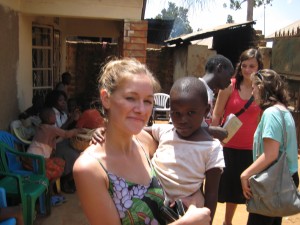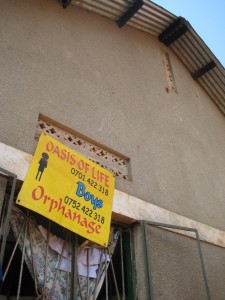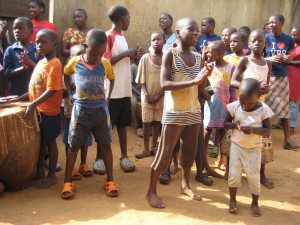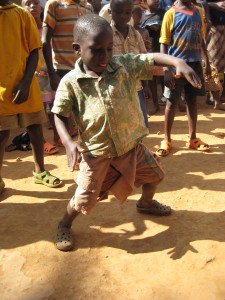By Reta Raymond
Associate Special Features Editor
I visited a different orphanage, the Oasis of Life, which I believe has failed due to a lack of transparency. My prior article highlighted Sanyu Babies Home, an orphanage that is largely succeeding, despite the lack of government assistance. Oasis exemplifies how corruption and few direct donations can dramatically affect children’s health and well-being. Much of what I have heard about Oasis can’t be independently verified, but I will still repeat what I have heard. Oasis’ story is one that has broken my heart.

There are around seventy children at Oasis who are between zero and eighteen-years-old, and there is not enough money to support them. The two or three live-in caretakers at Oasis are unpaid. The children eat one meal per day, but have been known to go without food for days at a time. To ration food, the children do not eat on Wednesdays; they simply pray. Tragically, it is rare that these children are sent to the hospital when they fall ill. Some of the children go to school, where the headmasters have waived their school fees, but others don’t. Oasis hopes to start a school for the children on the compound.

The children sleep three to a bunk, and even the teenagers must have a bunkmate. The compound is split into a boys’ and a girls’ house, and the older girls sleep away from the little girls. However, all the boys sleep in the same room, at least three per mattress. Many of the foam mattresses are thin and falling apart from having been washed so often when the children wet the bed. The boys’ house did not even have electricity. The children were not sleeping under mosquito nets when one group of travelers visited, so they bought some for the children. However, a couple months later a friend told me that the nets were gone.
Despite these hardships, when my group of friends and I visited, there were only happy, smiling faces to greet us. The children danced to the beat of the drums and sang songs about how grateful they were to God. We kicked balls around with the children and they taught us how to wrap strips of colored paper to make beads for necklaces they would sell. However, when we broke out the boxes of cookies to give out to the children, you could see the desperation on their faces. These children were so hungry they would pile up on each other to get more cookies. They couldn’t help themselves.

The Oasis children are a very special group, who are pleasant, thankful, and polite. One of my friends took Dixon, one of the young boys from Oasis, to the doctor one day, and then out for ice cream and fried chicken. Dixon saved a piece of chicken and brought it back for his best friend at the orphanage. It is amazing how well-adjusted, kind, and pleasant Oasis’ children are in spite of such hardship; but seeing the love that the caretakers and Pastor Robert, the in-house manager, have for these children makes it seem plausible.

The government doesn’t support any orphanages in Uganda, so they all rely on private donations. The head pastor for Oasis travels all over the United States seeking donations for Oasis, but these children are going hungry and living in unsanitary conditions. I can only speculate on his success in finding donations, but his multiple trips between the United States and Uganda alone are evidence of some level of success. Regardless of how much he is able to raise, it seems pretty clear that most of the donations are not making their way back to the orphanage. A dollar goes a very long way in Uganda. For example, the estimated cost of food for fifty children at Sanyu Babies Home, another orphanage, is about $3500 per year. I was also told stories of church groups who send Oasis hundreds of dollars per month, and still, these children skip meals on a regular basis.
Something doesn’t sit well with me over this fact pattern. While there is no hard evidence available, it seems clear that there is some degree of misappropriation going on. Corruption, which is such a huge problem in Uganda, rears its ugly head yet again, and this time it is the children who pay. Unfortunately, none of my contacts in Uganda have found a local group that they would trust to receive donations on behalf of Oasis. Friends tell me to only give money to people who you know would directly deliver supplies to the orphanage.
Meeting the children of Oasis was one of the best experiences in Uganda, but I left that country so heartbroken knowing that there are so few meaningful ways to help these children from my own country. This was certainly one of the most inhumane and appalling examples of corruption that I have ever heard of in Uganda, and I hope that the corruption ends soon for the sake of these children.